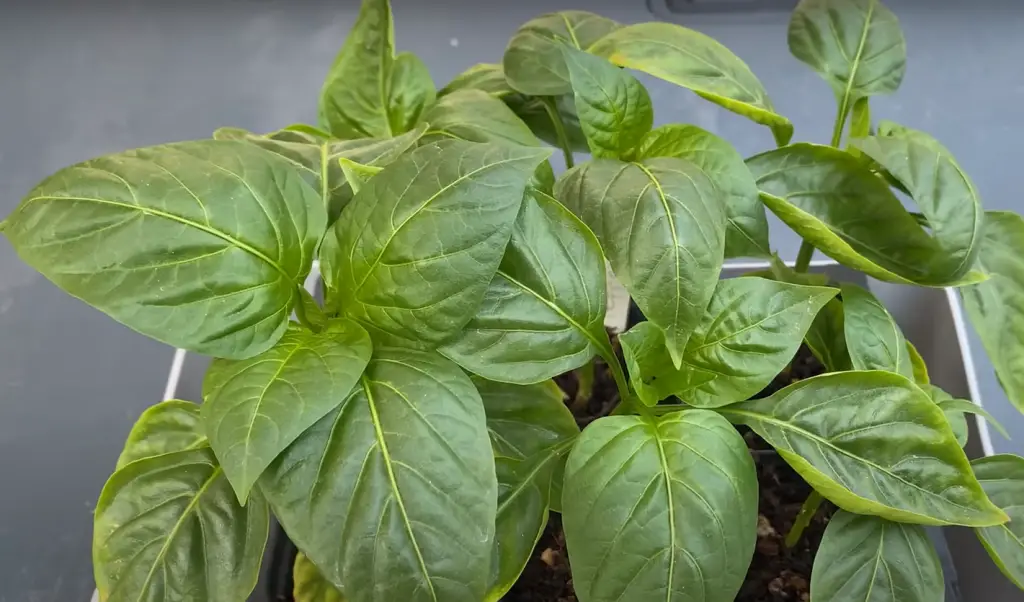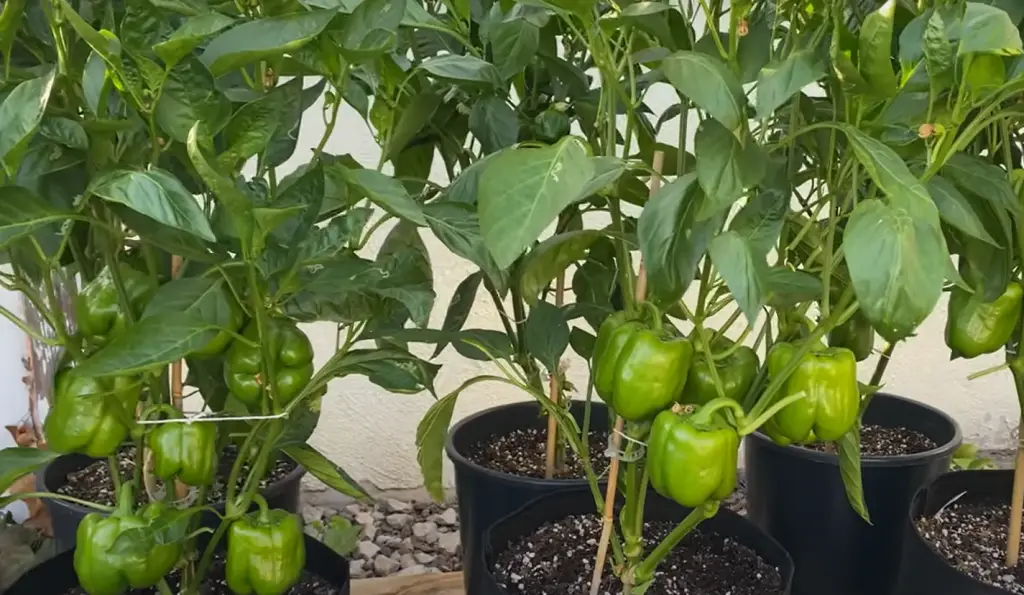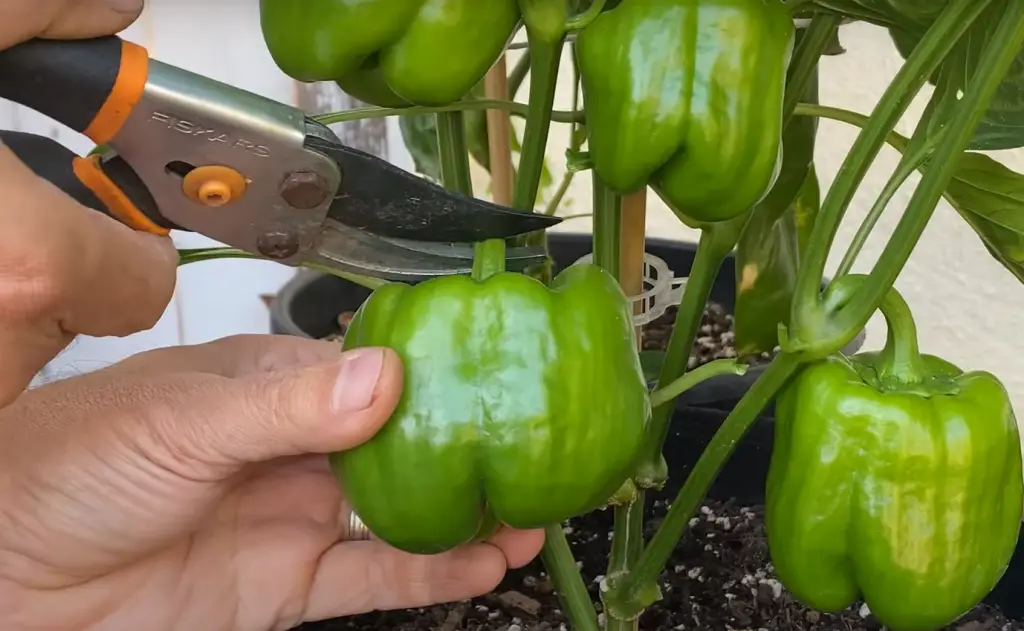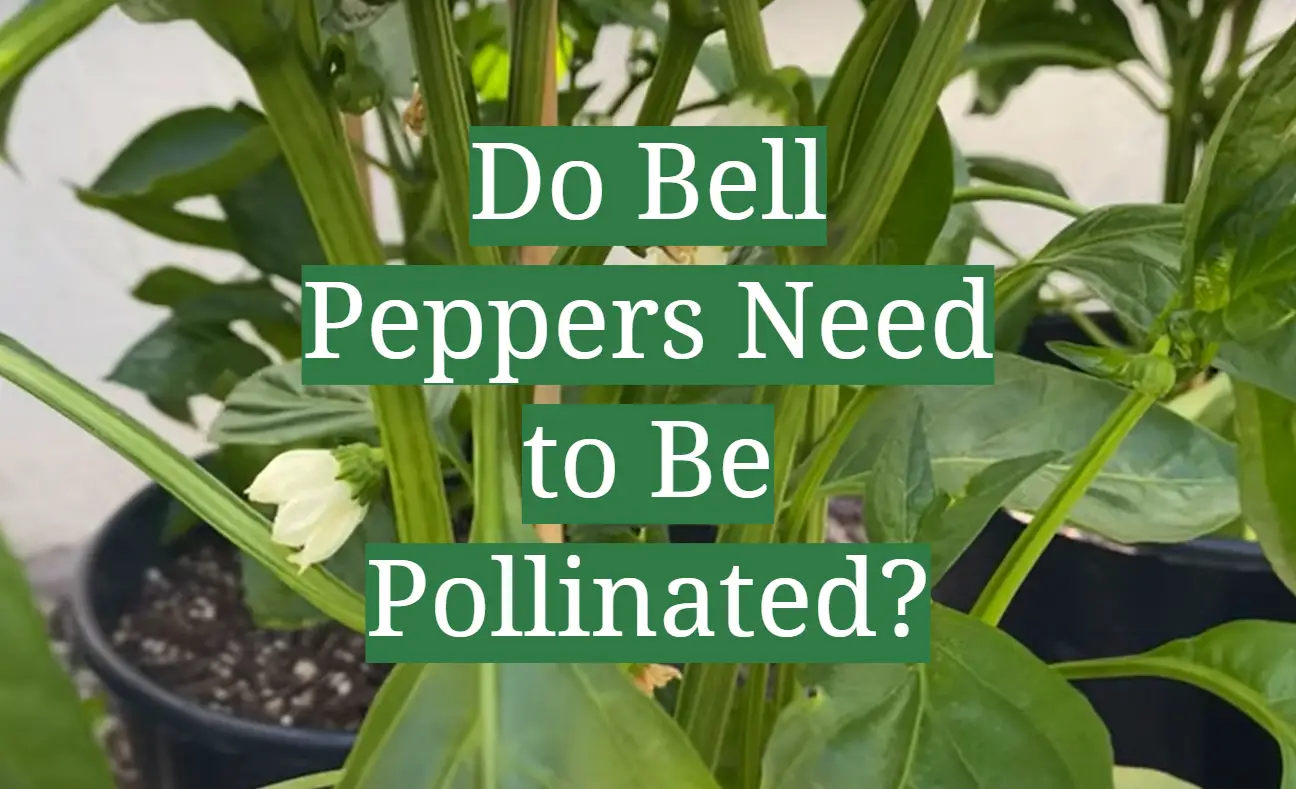The cultivation of bell peppers is a fascinating and complex process, one that involves a great deal of specialized knowledge and experience. One particularly important element of this process is determining if bell peppers need to be pollinated–and if so, what’s involved in the process? In this blog post, we’ll explore all these things related to pollination in order to answer the question: do bell peppers need to be pollinated? We’ll look at how plants are normally pollinated, examine what makes bell peppers unique from other crops when it comes to getting flowers set with pollen, and discuss strategies for managing pollination under different conditions. Ready? Let’s dive into understanding just exactly how it works!
How Useful are Bell Peppers?
Bell peppers have a variety of uses both in the kitchen and outside of it.
In the kitchen, bell peppers are a great addition to stir fries, salads, soups, stuffed peppers, sandwiches and tacos. They add flavor and texture to any dish. Bell peppers can also be roasted or grilled for an extra layer of flavor. In fact, many chefs use them as a secret ingredient in their recipes.

Outside of the kitchen bell peppers are used medicinally. For instance, they are known to contain high levels of antioxidants which help fight off free radicals that cause disease and aging. Additionally, they are rich in Vitamin C which helps boost immunity and cellular health. They’ve even been linked with reducing cholesterol and improving cardiovascular health.
In short, bell peppers are an incredibly versatile vegetable that can be used in numerous ways both in the kitchen and outside of it. They are beneficial for maintaining general health and wellbeing as well as adding flavor to any dish. So next time you’re at the grocery store, pick up some bell peppers! Your body will thank you for it. [1]
Are There Any Special Conditions Needed for Growing Bell Peppers?
Bell peppers need certain conditions for healthy growth.
Bell peppers also benefit from consistent watering; about 1 to 2 inches of water per week is recommended. Additionally, mulching the soil around the plant helps retain moisture, moderate temperatures, and keep weeds away.
It is also vital to ensure that the plants are planted in an area where there is good air circulation to help prevent diseases from developing on the leaves or fruit. Finally, be sure to regularly monitor for pests and disease so that you can take appropriate action if needed. With the right care and attention, your bell pepper plants should produce a delicious and plentiful harvest. [2]
How To Grow Bell Peppers?
Bell peppers are an easy and rewarding vegetable to grow. Here are some tips on growing bell peppers that will make your gardening experience a success:
- Start your pepper plants indoors, 8-10 weeks before the last frost of spring. Place them in a sunny window or under grow lights for best results.
- Choose a planting site with full sun and fertile, well-drained soil. Amend the soil with plenty of organic matter such as compost or peat moss prior to planting. If needed, add fertilizer according to package directions for optimal growth.
- Plant your seedlings about 18 inches apart when all danger of frost has passed and the soil is warm. Water your plants regularly, making sure they get about an inch of water each week.
- Mulch your pepper plants with organic material such as straw or grass clippings. This will help the soil stay moist and discourage weed growth.
- Help the peppers turn their characteristic red color by providing them with plenty of phosphorus and potassium in the form of a balanced fertilizer as they reach maturity.
- Harvest pepper pods when they are mature but still firm to the touch for best flavor, usually 70-90 days after planting. Cut them off from the plant rather than pulling them off to avoid damaging the plant’s roots and stems. [3]
What Types Of Bell Peppers Are There?
There are a variety of bell peppers with different colors, shapes, and sizes. The most common types of bell peppers include green, red, yellow, orange, purple, and black.

Green bell peppers have a mild flavor and are usually eaten raw or cooked. Red bell peppers have a sweet tangy flavor and can be used in salads or cooked dishes. Yellow bell peppers offer an even sweeter taste than the red ones and can also be eaten raw or cooked. Orange bell peppers have a slightly higher vitamin content than other colors and add a nice visual contrast to dishes. Purple bell peppers are similar in flavor to the green ones but have more antioxidants. Black pepper is very rare but is similar to red bell pepper in its sweetness and tartness.
All bell peppers are great for adding color and flavor to dishes, making them a popular choice in cooking all over the world! [4]
No matter what type of bell pepper you opt for, they are all nutritious, low calorie, and filled with vitamin C! Bell peppers also contain vitamins A and E as well as dietary fiber.
How Does Pollination Occur?
Pollination occurs when a pollinator, such as a bee, bird, or other insect, carries pollen from one flower to another. Pollen grains are the male reproductive cells of flowers and must be moved in order for fertilization and seed production to take place. As the pollinator moves from flower to flower, it collects and deposits pollen on its body. When visiting the next flower, some of this pollen is transferred onto the stigma (the female part) of the second flower, allowing fertilization to occur. This process is essential for plant reproduction and ultimately allows plants to produce fruits and vegetables that we eat! Plants also rely on wind-pollinated flowers (such as oak trees) rather than animal-pollinated ones. Here pollen is spread by the wind rather than a pollinator. [5]
The process of pollination depends on several factors, including the type of flower and the type of pollinator. Different types of pollinators are adapted to different types of plants; for example, bees prefer flowers with large petals and bright colors while butterflies prefer more fragrant ones. Similarly, different plants may be more easily pollinated by one species over another. For instance, some fruits require cross-pollination (the transfer of pollen from one plant to another) in order for fertilization to occur, whereas other plants can self-pollinate (when pollen from the same flower or plant is used). Understanding this process—both the plants involved and the animals that carry out the pollination—is essential for successful crop production.

In addition to bees, other animals like birds, bats, and butterflies also play a role in pollinating plants. As the planet’s human population continues to increase, however, these species are increasingly at risk due to habitat loss and climate change. This can lead to an overall decline in pollinator populations and an overall decrease in crop yields. To mitigate this risk, many governments and organizations have taken steps to protect and conserve wildlife habitats as well as promote sustainable agricultural practices that support the health of both plants and pollinators. [6]
Do Bell Peppers Need To Be Pollinated?
Bell peppers need to be pollinated in order to produce fruit. The flowers on a pepper plant are self-pollinating, meaning they can pollinate themselves without the help of bees or other insects. However, for larger yields of fruits, the plants do benefit from insect visits. Bees and other pollinators help move pollen between flowers so that fertilization can take place more efficiently.
Additionally, hand-pollination is another option if you don’t have access to natural pollinators in your garden. [7]Are Bell Peppers Self Pollinating?
Most of the flowers on the pepper plant have both male and female reproductive parts which allow them to pollinate themselves without the need for cross-pollination from another pepper plant. This means that bell peppers do not require bees or other insects to spread their pollen like many other plants do. Bell peppers can still benefit from insect pollinators but it is not a requirement for successful production.
In addition to being self-pollinating, bell peppers are also generally considered an easy crop to grow in home gardens due to their relatively low maintenance requirements. They thrive in warm climates with plenty of sun and well-drained soil. With proper care, bell peppers can be harvested multiple times throughout the growing season, providing a steady supply of sweet, crunchy peppers for many months.
By taking advantage of their self-pollinating nature and easy-to-manage requirements, bell peppers can be an excellent choice for gardeners who want to produce fresh vegetables without the hassle or expense of having to purchase additional pollinators. [8]
How To Pollinate Bell Peppers Fast?
Pollinating bell peppers quickly is key to ensuring a healthy harvest. Fortunately, there are a few easy steps you can take to ensure your peppers get the pollination they need.
The first step in quick pollination of bell peppers is finding and selecting insects that will do the job efficiently. The most common method for this is hand-pollinating with a small brush or cotton swab. This simple process involves using the brush or swab to transfer pollen from the male stamen (located within the flower) to the female stigma (also located within the flower).
If you don’t have the time or preferences to hand-pollinate, another option is to use insects for pollination. Bees are a common choice as they are plentiful and effective at transferring pollen between plants. To attract bees, plant flowers such as clover, dahlias, or sunflowers near your bell pepper patch. Additionally, some gardeners attach small bee houses to their peppers in order to encourage the insects to stay in the area.

Finally, if you want a truly hands-off approach to pollinating your bell peppers quickly, look into using wind for pollination instead of insects or manual brushing. This technique involves using fans set up around the pepper patch that will blow air through it and disperse pollen. This is a great option for gardeners who want to save time and don’t mind the extra noise of the fans.
With these steps, you can quickly and easily pollinate your bell peppers with minimal effort. Whether you choose to hand-pollinate, use insects, or utilize wind for pollination, following these guidelines will ensure that your peppers get the pollination they need in order to produce a healthy harvest. [9]
Do Bell Peppers Need Other Plants Nearby?
It depends on the type of bell pepper that you are growing. If you are growing a determinate variety, then you do not need to worry about having other plants nearby. Determinate varieties grow to a fixed size and can be planted in rows or blocks on their own without any neighboring plants.
However, if you are growing an indeterminate variety of bell pepper, then it would be beneficial to have other plants near your peppers for support and pollination purposes. Indeterminate varieties continue producing fruit throughout their entire life cycle and require some form of support as they grow taller. Having other plants nearby—such as tomatoes or eggplants—can provide additional structural support for the peppers while also increasing cross-pollination and increasing your overall harvest.
In addition, having other plants nearby can also help to improve the soil in the area by providing additional nutrients and organic matter to the surrounding environment. This will help to create a better growing environment for your peppers, leading to healthier plants that are more productive and resistant to pests and disease. [10]
FAQs
Do bell peppers need to be hand pollinated?
No, bell peppers are self-pollinating plants and do not require hand pollination. However, if you want to improve the yield of your pepper plants, you may choose to hand pollinate as an extra precaution. To do this, simply take a small paintbrush or cotton swab and transfer pollen from the male flower to the female flower. This will help ensure good fertilization and successful fruit production.
Do you need 2 pepper plants to get peppers?
No. Peppers are self-pollinating and may produce fruit with just one plant. However, having more than one plant will usually result in a greater yield of peppers over time.

Additionally, having multiple varieties of pepper plants can help to ensure pollination and prevent issues from disease or pests.
Do bell peppers need to be fertilized?
Fertilizer helps give the plant the nutrients it needs to grow strong and produce healthy fruits. The type of fertilizer you use will depend on the soil in your garden and the specific nutrient requirements for your bell pepper plants. Generally speaking, a balanced fertilizer with an equal ratio of nitrogen, phosphorus, and potassium is recommended. Depending on the soil conditions, you may also need to supplement this with additional organic matter such as compost or manure. Be sure to follow the directions on any fertilizer product you purchase to ensure that you are providing the correct amount of nutrients for your bell peppers.
How far away do peppers need to be to not cross pollinate?
The exact distance depends on the variety of pepper. For smaller-fruited varieties, such as jalapenos and habaneros, peppers must typically be at least 10 feet apart to prevent cross pollination. For larger-fruited varieties, such as bell peppers, a minimum of 30 feet is recommended. To ensure complete isolation from other varieties, it may even be necessary to separate the peppers by up to 50-100 feet. Additionally, non-pepper crops should also not be planted within this segregated area in order to keep other pollen sources away from the pepper plants.
Useful Video: How To Pollinate Peppers Indoor and How to Prevent Pepper Flowers From Dropping
Final Thoughts
As you can see, proper pollination of bell peppers is essential for the growth and success of these versatile vegetables. Not only do bell peppers add color to salads and can be used in a variety of dishes, but they are also packed full of nutritious benefits that are great for our bodies! There’s no reason why any home gardener or farmer shouldn’t include bell peppers in their crop lineup. With a bit of knowledge on hand and some nurture along the way, bell pepper cultivation should run smoothly and yield healthy harvests for years to come. We hope this blog post has been a helpful guide to the pollination process and that you’ll be inspired to make bell pepper part of your next growing season!
References:
- https://www.medicalnewstoday.com/articles/bell-peppers
- https://www.almanac.com/plant/bell-peppers
- https://www.allaboutgardening.com/bell-peppers/
- https://www.masterclass.com/articles/4-easy-ways-to-cook-with-red-bell-peppers
- https://www.pollinator.org/pollination
- https://australian.museum/learn/species-identification/ask-an-expert/what-is-pollination/
- https://greenupside.com/do-peppers-need-to-be-pollinated-plus-4-ways-to-do-it/
- https://gardeninghood.com/are-peppers-self-pollinating/
- https://www.gardeningknowhow.com/edible/vegetables/pepper/hand-pollinating-peppers.htm
- https://www.allaboutgardening.com/bell-pepper-companion-plants/










Leave a Reply
View Comments